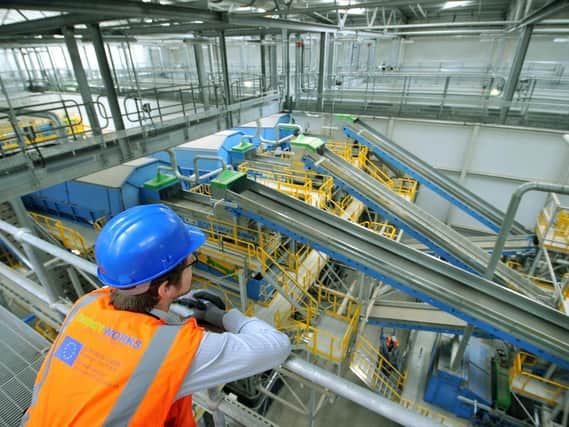Why Yorkshire should be at the heart of a green revolution - Richard Shaw


We’ve experienced global loss of a magnitude not seen during peacetime and the effect on our economy has been devastating. Record-high unemployment rates are expected to increase significantly further, especially impacting on young workers and predictions are that the economy could shrink by almost a third.
Our immediate priority is to support businesses and communities through this crisis. The pandemic will not disappear instantly and our economy will bear the scars for some time.
Advertisement
Hide AdAdvertisement
Hide AdHowever, during this pandemic, we have witnessed remarkable acts of kindness unite communities and have seen businesses pivot and adapt, demonstrating great entrepreneurial spirit and resilience. This provides hope as we look to the future. So too, does the positive impact of behaviour changes on our environment, forced through lockdown but nonetheless, creating change for good.
In York & North Yorkshire, we have seen air pollution decline, benefiting public health. As industry and manufacturing have been forced to close down and travel restricted, the largest ever annual fall in emissions is predicted for 2020.
As we combat the effects of Covid-19, many of us are now considering what we can learn from this experience and how we use this knowledge to build a new future and economy that is stronger than before.
But how? In our region, we believe our carbon reduction plan is key to unlocking this opportunity.
Advertisement
Hide AdAdvertisement
Hide AdOur ambition is to be the UK’s first carbon negative region – carbon neutral by 2034 and carbon negative by 2040. By gearing up to transform to carbon negative, we are confident this will create new, better paid ‘green’ jobs that will help people, including the young, connect to exciting careers close to home.
It will create innovative, new businesses and give existing businesses opportunity to adapt. Our region is well-positioned to realise the ambition.
Our natural landscapes have substantial potential to store carbon, preventing its harmful release into the atmosphere. Through the study, we understand how our forests and repaired peatlands can store carbon and reduce emissions by 1.1 million tonnes of carbon/year by 2038.
Our region is ready to rise to the challenges this ambition presents. Our strengths in innovation and bio-technologies, combined with the backing of anchor institutions like the University of York means we have both the appetite and capability to make this happen.
Advertisement
Hide AdAdvertisement
Hide AdEven so, the scale of the challenge is massive. In order to offset the direct emissions from agriculture, we will need to employ people to plant 2,000 hectares of new forest every year, the equivalent of over 3,700 football pitches, between now and 2038, as well as restore 100 per cent of our peatlands.
Road transport accounts for the most emissions in our region at 36 per cent and 50 per cent of this relates to private car use. To reduce this, we need to cut journeys by 15 per cent (in vehicle km), and increase walking and cycling by a third and nine times respectively. Our towns and city must encourage people out of cars, promote active travel or sustainable private and public transport alternatives. The challenge is huge, but then so is the opportunity.
The government’s plan focuses on being carbon- neutral by 2050. We need to go further and faster than this. We want our region to lead on demonstrating new technologies, approaches and models creating a regional testbed that ultimately, puts us at the forefront of the agenda nationally.
We say let’s seize this opportunity to re-imagine our future where ambitious growth is not only possible, but is simultaneously good for business, people and our planet. This is at the heart of our Local Industrial Strategy and as we look at our region’s economic recovery from Covid-19, our carbon-negative ambition has never been so important.